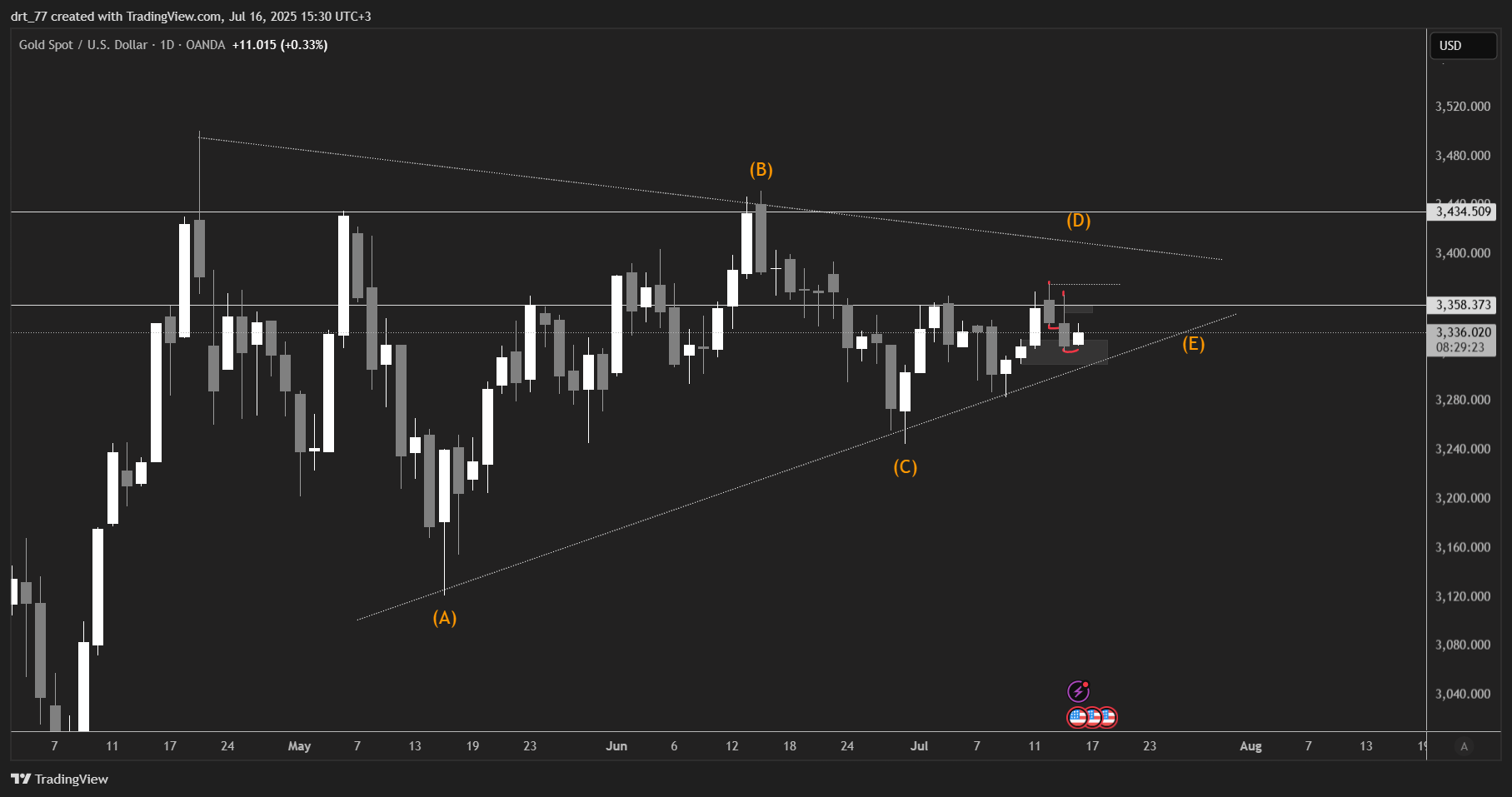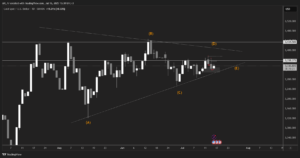Gold prices fell for the second consecutive session on Thursday, as the US dollar and Treasury yields rose ahead of key inflation data that could provide more clarity on the Federal Reserve’s interest rate path.
The US dollar crossed the 105 mark, making the dollar-denominated yellow metal less attractive to holders of other currencies, while benchmark US 10-year bond yields remained near multi-week highs reached in the previous session.
Gold has fallen more than $100 since hitting a record high of $2449.89 on May 20, as hawkish statements from Federal Reserve officials and minutes of the last meeting pointed to a long path to the 2% inflation target.
While bullion is considered a hedge against inflation, rising interest rates increase the opportunity cost of holding non-yielding assets.Traders currently expect a 59% chance of a rate cut by November.Key US personal consumption expenditure inflation data, the Fed’s preferred inflation gauge, is due out on Friday.
Gold and the Dollar Now
– Gold futures are now down 0.35% to $2356 an ounce.-
– While spot gold is down about 0.16% to $2334 an ounce.
– On the other hand, the dollar index is steady at 105.010 points.
Other Metals
– Silver fell 1.7% in spot trading to $31.40, platinum fell 0.3% to $1032.25 and palladium lost 2.1% to $944.75.
Urgent: Wall Street Turns Red, Dollar Surge Knocks Down Gold
US stock indexes fell in conjunction with the dollar index approaching the 105 mark, which led to a significant decline in global gold prices.
Nvidia saw volatile trading early on, swinging between gains and losses, signaling its first negative session since posting strong earnings last week. Over the past three trading days since the report’s release, Nvidia’s stock has risen by about 20%.
Outside of technology, American Airlines (NASDAQ:AAL) shares fell more than 14% after cutting its second-quarter sales forecast. Southwest Airlines Co (NYSE:LUV) shares fell about 5%. All 11 sectors of the S&P 500 index were down, confirming the breadth of the market’s decline. About 450 stocks in the index were down on the day.
The downward move today comes as the yield on the 10-year Treasury rose for the second day, now at 4.61%. On Tuesday, the benchmark yield rose above 4.5% – a troubling level for stock investors – after a Treasury auction that met with weak demand.
While there was a mixed start to the short week, the major averages are on track to close the month with significant gains. The S&P 500 is up about 5% this month, while the Dow Jones is up about 2%. The Nasdaq has gained over 8% in May.
Oil Retreats Amid Demand Concerns, Key Data to Move Prices
Oil prices fell on Thursday as resilient US economic data pointed to the possibility of borrowing costs remaining elevated for longer, a potential blow to demand for crude. Both benchmark crudes are on track for monthly losses, with Brent futures down more than 5% from last month, while West Texas Intermediate is down more than 3%.
US crude oil and gasoline inventories fell last week, while distillate inventories rose, according to market sources citing American Petroleum Institute (API) data on Wednesday. The sources said API data showed crude inventories fell by 6.49 million barrels in the week ended May 24, while gasoline inventories fell by 452,000 barrels and distillate inventories rose by 2.045 million barrels.
Analysts had expected US energy companies to draw down 1.9 million barrels of crude oil from inventories, while storing 0.4 million barrels of distillates and 1 million barrels of gasoline.
OPEC+ Meeting
Rising global oil inventories through April due to light fuel demand could bolster the argument of OPEC+ producers, including the Organization of the Petroleum Exporting Countries (OPEC) and allies including Russia, to maintain supply cuts when they meet on June 2.
Yib added: “The biggest driver of oil prices in the coming days will be the upcoming OPEC+ meeting, which could see OPEC members extend current production cuts until the end of the third quarter to support prices.”
Oil markets are under pressure from expectations that the Federal Reserve will keep interest rates high for longer, with Brent settling at its lowest in more than three months on May 23. A Federal Reserve survey showed that U.S. economic activity continued to expand from early April to mid-May, but businesses became more pessimistic about the future while inflation rose at a modest pace.
Higher borrowing costs tend to restrict money and consumption, which is negative for demand for crude oil and its prices. The Federal Reserve is now expected to cut interest rates in September at the earliest, compared to the early June that markets had expected at the beginning of the year.
Oil Prices Now
Ahead of US crude oil inventory data due later today, Brent futures fell 26 cents or 0.3% to $83.34 a barrel. While US West Texas Intermediate fell 23 cents or 0.3% to $79 a barrel.
Disclaimer: This article is not investment advice or an investment recommendation and should not be considered as such. The information above is not an invitation to trade and it does not guarantee or predict future performance. The investor is solely responsible for the risk of their decisions. The analysis and commentary presented do not include any consideration of your personal investment objectives, financial circumstances, or needs.





